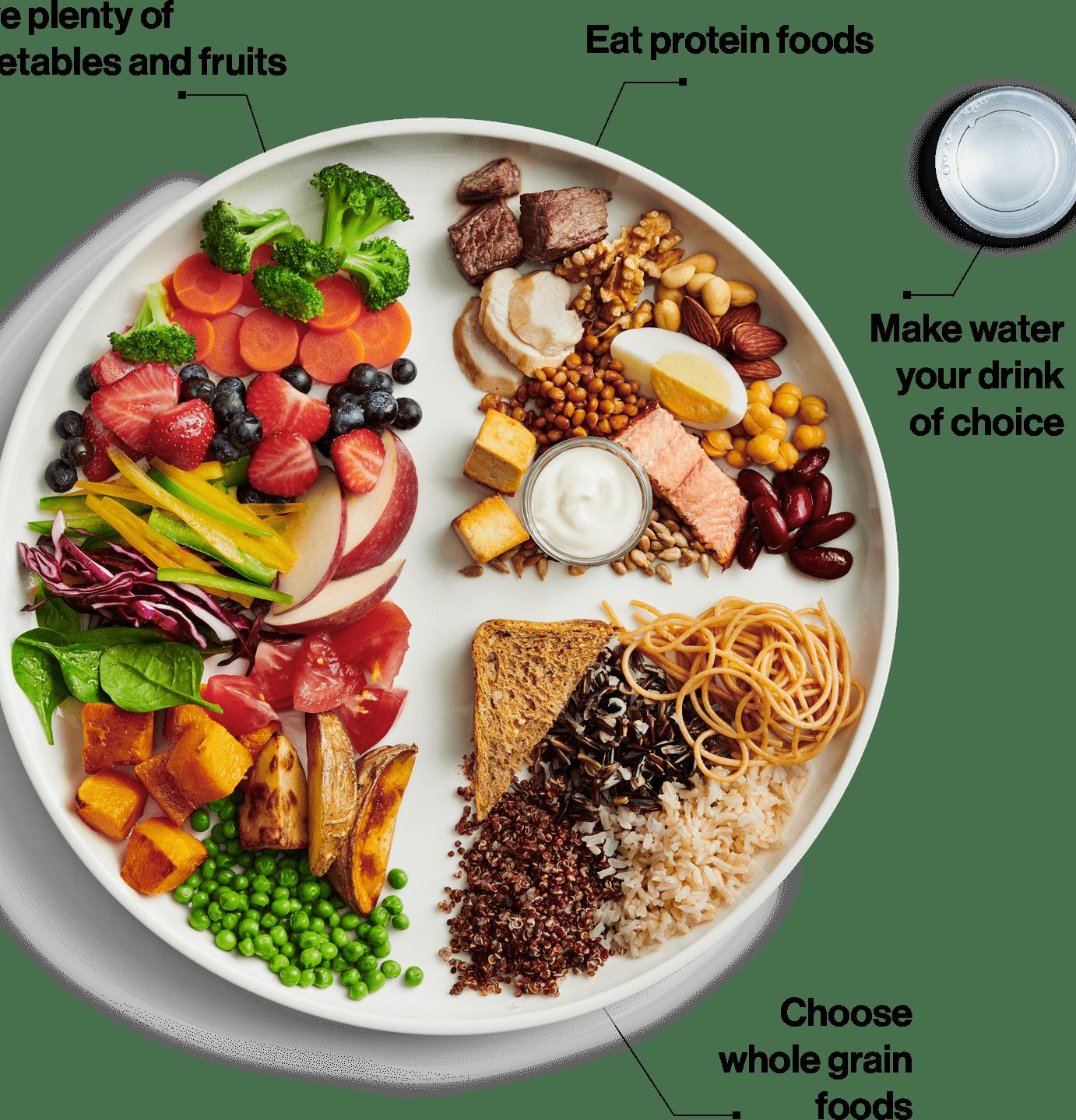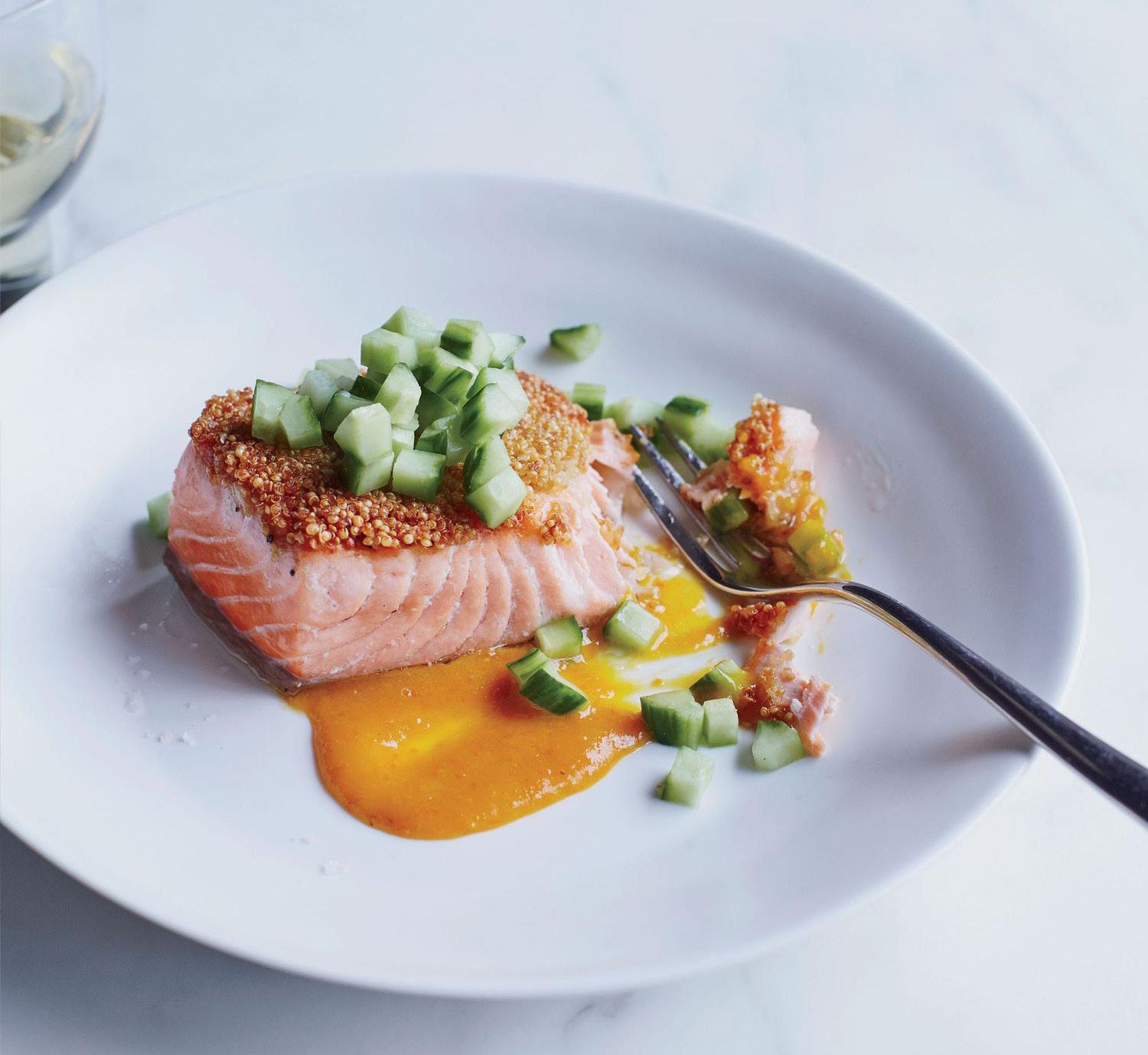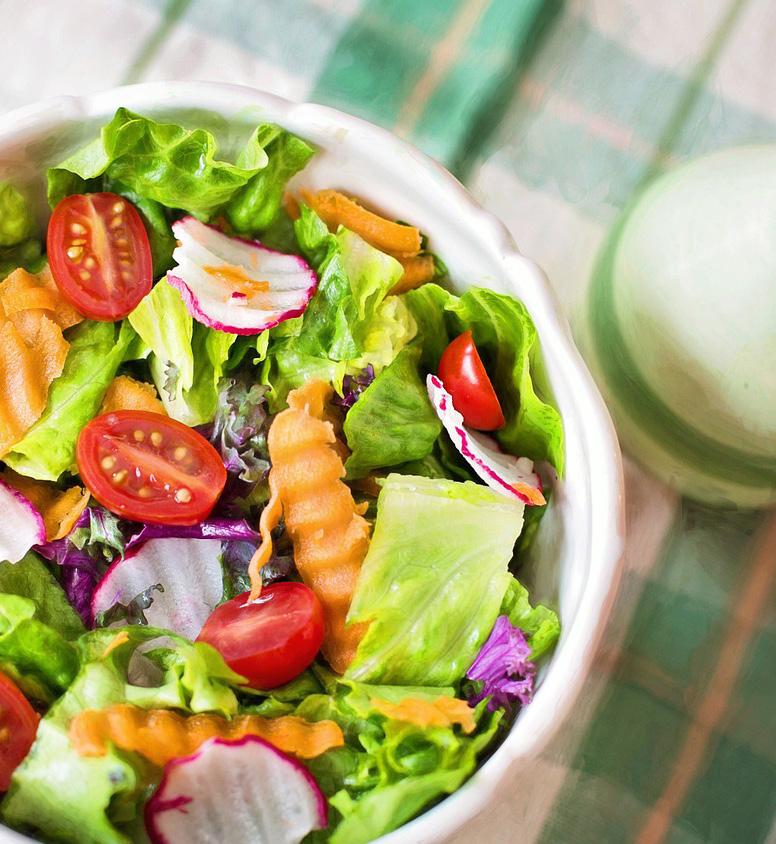




“
“The food you eat can be either the safest and most powerful form of medicine or the slowest form of poison.” – Ann Wigmore

PHOTOGRAPHY Alice Gao
CONTENT Carolyn Denton, LN







“
“The food you eat can be either the safest and most powerful form of medicine or the slowest form of poison.” – Ann Wigmore

PHOTOGRAPHY Alice Gao
CONTENT Carolyn Denton, LN

“Nutrients are the nourishing substances in food that are essential for the growth, development and maintenance of body functions. Essential meaning that if a nutrient is not present, aspects of function and therefore human health decline. When nutrient intake does not regularly meet the nutrient needs dictated by the cell activity, the metabolic processes slow down or even stop.”
Perspectives in Nutrition, Wardlow and Insel
The food we eat gives our bodies the “information” and materials they need to function properly. If we don’t get the right information, our metabolic processes suffer and our health declines.
If we get too much food, or food that gives our bodies the wrong instructions, we can become overweight, undernourished, and at risk for the development of diseases and conditions, such as arthritis, diabetes, and heart disease.
In short, what we eat is central to our health. Consider that in light of Webster’s definition of medicine: “The science and art dealing with the maintenance of health and the prevention, alleviation, or cure of disease".
The nutrients in food enable the cells in our bodies to perform their necessary functions. This quote from a popular textbook describes how the nutrients in food are essential for our physical functioning.
In other words, nutrients give our bodies instructions about how to function. In this sense, food can be seen as a source of “information” for the body.
Thinking about food in this way gives us a view of nutrition that goes beyond calories or grams, good foods or bad foods. This view leads us to focus on foods we should include rather than foods to exclude. Instead of viewing food as the enemy, we look to food as a way to create health and reduce disease.

You’ve probably been told since you were a kid that eating healthy is important. That means keeping a diet that’s rich in fruits and vegetables, whole grains, lean meat and low-fat dairy.
A healthy diet might look different from what you think, though. It’s not settling on a rotation of meals and snacks you like and then eating those day in, day out. Instead, it’s keeping a wide variety of nutrient-packed foods in your cooking rotation.
“Focus on food groups that are packed with nutrition, such as beans or vegetables,” says dietitian Julia Zumpano, RD, LD. “Variety is key. For instance, don’t limit yourself to eating the same few veggies; instead, challenge yourself to choose a different vegetable every day. You don’t want to eat the same specific foods every day.”
You might wonder why eating a variety of healthy foods is important. After all, if something is healthy, isn’t it fine to eat it every day?
While that can certainly be true — for blueberries is fine for a daily snack — there things up.
“You get more nutrients from eating a a good rule of thumb is trying to eat a tend to have similar nutrient properties.” yellow, orange and red.
Changing up your diet can also help you same foods every day? That’s so boring, that’s when your diet goes by the wayside.”
Starchy carbohydrates should make up just over a third of the food you eat.
Choose higher fibre or wholegrain varieties , such as wholewheat pasta, brown rice or potatoes with their skins on.
They contain more fibre than white or refined starchy wcarbohydrates and can help you feel full for longer.
Try to include at least 1 starchy food with each main meal. Some people think starchy foods are fattening, but gram for gram the carbohydrate they contain provides fewer than half the calories of fat.
Keep an eye on the fats you add when you're cooking or serving these types of foods because that's what increases the calories.
example, a nutrient-packed fruit like there are very good reasons for mixing
variety of foods” , she says, and notes that food of “each color of the rainbow. These properties.” For example, foods rich in vitamin C are
you stick to eating healthy. “Who wants to eat the boring, right?” Zumpano says. “And when you’re bored, wayside.”


You'll need some fat in your diet, but it's important to pay attention to the amount and type of fat you're eating.
There are 2 main types of fat: saturated and unsaturated. Too much saturated fat can increase the amount of cholesterol in the blood, which increases your risk of developing heart disease.
On average, men should have no more than 30g of saturated fat a day. On average, women should have no more than 20g of saturated fat a day.
Children under the age of 11 should have less saturated fat than adults , but a low-fat diet is not suitable for children under 5.
For a healthier choice, use a small amount of vegetable or olive oil, or reduced-fat spread.
All types of fat are high in energy, so they should only be eaten in small amounts.
EATING AN UNHEALTHY DIET CAN HAVE SERIOUS CONSEQUENCES AND CAN INCREASE SOMEONE’S RISK OF DYING FROM HEART DISEASE, STROKE AND TYPE 2 DIABETES.
PHOTOGRAPHY galyafanaseva
CONTENT — Carolyn Denton, LN



31.3%
of adult was AFFECTING BY OBESITY , which has increased by 5% in US.
The connection between food and disease
As a society we are facing significant health problems. The US ranks 9th in life expectancy among nations in the developed world.
We have a workforce plagued with absenteeism and reduced productivity because of chronic health problems, including depression.
Many researchers now believe that these problems are partly related to diet. While they used to believe that diseases – such as type II diabetes, obesity, heart disease, stroke, and certain cancers – were caused by a single gene mutation, they are now generally attributing these conditions to a network of biological dysfunction. And the food we eat is an important factor in that dysfunction, in part because our diets lack the necessary balance of nutrients (Proceedings of the Nutrition Society, 2004).

36.5% 4%
of adult was AFFECTING BY OBESITY , which has increased by 17% in Oklahoma.
The Functional Medicine Perspective
One component of Functional Medicine focuses on how diet impacts health and function. When Functional Medicine practitioners examine the role of nutrition in chronic disease, they look at multiple systems, such as the digestive system, the immune system, and the detoxification system, because of the interconnections between those systems.
For instance , because 80% of the immune system is contained in the gastrointestinal system, a person's issues with immunity could be related to faulty digestion.
Functional Medicine maintains that chronic disease is almost always preceded by a period of declining health in one or more of the body's systems. Thus, these practitioners seek to identify early the symptoms that indicate underlying dysfunction, possibly leading to disease.
of CARDIOVASCULAR DEATHS have increased in Texas.
Example of Cardiovascular Disease
When taking a nutritional approach to health and disease, it is important to understand that one disease might have multiple causes, and one underlying dysfunction might cause multiple diseases. Cardiovascular disease may be among the clearest examples of this concept.
Researchers have shown that the development of heart disease can be triggered by multiple factors. These factors include insulin resistance, elevated homocysteine, oxidative stress, elevated cholesterol, hypertension, heavy metal toxicity, stress, and inflammation. Each of these factors can be influenced by nutrition and each, in turn, impact our nutritional needs.
For example , a 2007 study shows the importance of optimal mineral balance and how a deficiency in mineral balance can contribute to the development of congestive heart failure.
The key to a healthy diet is to eat the right are so you balance the energy you consume eat or drink more than your body needs, energy you do not use is stored as fat. lose weight. You should eat a wide getting a balanced diet and your it needs. Starting to make your reducing the pressure on yourself Change can be hard to inevitable. It’s how that is important.

right amount of calories for how active you consume with the energy you use. If you needs, you'll put on weight because the fat. If you eat and drink too little, you'll range of foods to make sure you're body is receiving all the nutrients diet healthier can be hard, but yourself can make it easier. maintain and lapses are how you deal with it important.

A person does not have to eat meat to get all the nutrients they need for good health. A meat-free diet can lead to better health for several reasons .
One reason is that many people who follow a vegetarian diet tend to consume a high proportion of fresh, healthful, plant-based foods, which provide antioxidants and fiber.
When a person decides to follow a meat-free diet, they often become more active in making overall healthy choices. People following a vegetarian diet do not eat meat or fish.
Well-balanced vegetarian diets are appropriate for all stages of the life cycle, including children, adolescents, pregnant and lactating women, the elderly and competitive athletes.
The reasons for choosing a vegetarian diet often go beyond health and well-being and include among others economical, and social concerns.
The influences of these aspects of vegetarian diets are the subject of the new field of nutritional ecology that is concerned with sustainable life styles and human development.



In today’s fast-paced world, maintaining a balanced diet can be challenging, but our carefully crafted recipes make it easy to enjoy wholesome meals without sacrificing flavor.
At Healthy Bites, we believe that eating well doesn't have to be complicated. Our healthy recipes focus on whole foods like lean proteins, fresh vegetables, and whole grains, providing the perfect balance of essential nutrients. From energizing breakfasts to light yet filling lunches and flavorful dinners, each dish is designed to nourish your body while keeping you satisfied.

Enjoy these protein-rich egg wraps filled with mushrooms and tomatoes for a quick, filling and healthy breakfast. It provides iron, folate and fibre.
Eggs
Rapeseed oil
Porridge oats
Parsley, finely chopped
Cherry tomatoes, halved / tomatoes, cut into wedges
Pack closed cup mushrooms
English mustard powder made up with water





STEP 1
Thickly slice half the pack of mushrooms. Heat 2 tsp rapeseed oil in a non-stick pan. Add the mushrooms, stir briefly then fry with the lid on the pan for 6-8 mins. Stir in half the tomatoes then cook 1-2 mins more with the lid off until softened.
STEP 2
Beat together the eggs really well with the parsley and oats. Heat a drop of oil in a large non-stick frying pan. Pour in a ¼ of the egg mix and fry for 1 min until almost set, flip over as if making a pancake. Tip from the pan, spread with a quarter of the mustard, spoon a ¼ the filling down the centre and roll up. Now make a second wrap using another ¼ of the egg mix and filling. If you're following our Healthy Diet Plan, save the rest for the following day.

Lemon juice
Bag watercress
Large lean steak
Pearl barley. rinsed
Olive oil, plus a little extra
Red onion, cut into 8 wedges
Red pepper cut into strips
Yellow pepper, cut into strips

PHOTOGRAPHY Ree Drummond CONTENT — Good Food Team
STEP 1
A vibrant salad packed with yellow and red peppers, colourful onion, beef cooked to your liking and healthy grains
Steak is not just a rich source of protein; it also provides essential nutrients like zinc, which supports immune function, brain health, and muscle building. Additionally, steak is packed with vitamin B12 and iron, both crucial for energy production and maintaining healthy cells.
There are a lot of vitamins and nutrients found in red meat, which is why when eaten in moderation, it can be an excellent source of nutrition your body needs to thrive. Whether you love it or not, we can agree that eating steak carries a huge amount of nutritional benefits.
Put the pearl barley in a large pan of water. Bring to the boil and cook vigorously for 25-30 mins or until tender. Drain thoroughly and transfer to a bowl.
STEP 2
Meanwhile, heat oven to 200C/ 180C fan/gas 6. Put the peppers on a baking tray with the onion wedges, toss in 1 tbsp olive oil and roast for about 20 mins until tender.
STEP 3
While the peppers are roasting, rub the steak with a little bit of oil and season. Cook in a non-stick frying pan for 3-4 mins each side, or to your liking. Set aside to rest for a few mins. Mix the cooked peppers and onions into the barley. Stir though the watercress, lemon juice and some seasoning. Thinly slice the steaks, place on top of the salad and serve with lemon wedges, if you like.

Dinner is a very important meal in most homes. If you are busy throughout the day and you eat quick meals for breakfast and lunch, dinner can be the meal that is the one that is most associated with love and care.
If you have a quick breakfast and lunch that is still balanced, then dinner can be the time to work with great ingredients and create a meal that is wonderful and will help you sleep too. Ideally, lunch should be the biggest meal of the day when digestion is at its best. The time you eat dinner is just as important as what you eat. Many a time people eat dinner very late and then struggle with poor quality sleep, disturbed digestion and volatile dreams. Eating your dinner before seven and going to be within two to three hours of it is the best way to stay light, healthy and have great sleep.
Let's try spaghetti dinner for two, with king prawns and harissa dressing. It only takes 20 minutes to make and is healthy too – great for a midweek meal.
Olive oil
Raw king prawns
Rose harissa paste
Lemon, finely zested
Cherry tomatoes, halved
Large garlic clove, lightly bashed
Long-stem broccoli, cut into thirds
Dried spaghetti, regular or wholemeal

Bring a pan of lightly salted water to the boil. Add the broccoli and boil for 1 min 30 secs, or until tender. Drain and set aside. Cook the spaghetti following pack instructions, then drain, reserving a ladleful of cooking water.
2
3
4
Heat the oil in a large frying pan, add the garlic clove and fry over a low heat for 2 mins. Remove with a slotted spoon and discard, leaving the flavoured oil.
Add the tomatoes to the pan and fry over a medium heat for 5 mins, or until beginning to soften and turn juicy. Stir through the prawns and cook for 2 mins, or until turning pink. Add the harissa and lemon zest, stirring to coat.
Toss the drained spaghetti with the prawns and harissa sauce, adding a little pasta water to create a smooth, well-coated mixture. Stir in the broccoli, mixing everything together until combined. Enjoy!
Nothing beats the airy texture and rich flavor of a classic mousse. These sweet delights are sure to be the perfect ending to any big meal.

How many times have the health freaks around you told you to ditch dessert? I guess you have lost count. While some people believe that feasting on desserts is unhealthy, the truth is that when eaten in moderation, desserts are actually healthy. Therefore, if you are one of those “health-conscious” people who crave smores, chocolates, strawberry cakes, and other types of desserts but feel guilty at the mere confession of your cravings, we have got some good news for you. Eating desserts doesn’t mean that you don’t care about your health.
Small amounts of sweets help stimulate digestion, giving us a sense of enjoyment and relaxation. For the parasympathetic nervous system to be able to do its job of digesting our food, we need to be in a non-rushed, relaxed state. In particular, the physiologic benefits of dessert center around dark chocolate. Many studies show benefits of eating dark chocolate, from boosting our serotonin levels to reducing inflammation. Granted, of course, this is all in moderation.
Caster sugar
Low-fat yogurt
Large egg whites
Dark chocolate 70%
Berries (try blueberries, raspberries or cherries)
STEP 1
Melt the chocolate in a heatproof bowl over a pan of simmering water, making sure the bowl doesn’t directly touch the water. Once melted, allow it to cool for 5-10 mins, then stir in yogurt
STEP 2
Whisk the egg whites until stiff, then whisk in the sugar and beat until stiff again. Fold the whites into the chocolate mix – loosen the mixture first with a spoonful of egg white, then carefully fold in the rest, keeping as much air as possible.
STEP 3
Put berries into small glasses or ramekins, then divide mousse on top. Chill in the fridge until set.

Lecturer: Bui Duy Khac
